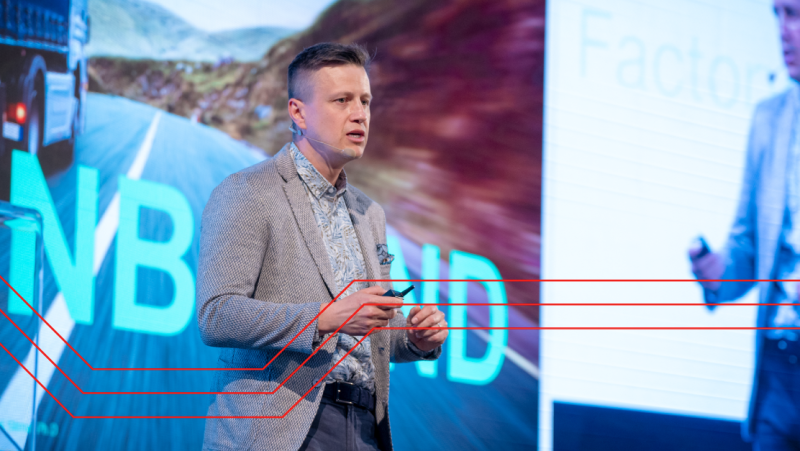The Specifics of Delivering for Jaguar Land Rover (JLR)
- Automotive
- Article
A new JLR plant is being constructed in Slovakia. This is one of the largest foreign investments in Slovakia’s modern history. Our question is: what will they be requiring of their suppliers? To find the answer, we’ll be exploring a variety of manuals and guides, as well as the requirements JLR addresses and checks in their logistics audit.
Based on their audit’s results, JLR divide up suppliers into three basic groups: A, B and C. A means a risk-free supplier, B means one with a low risk of not fulfilling deliveries and C means one with high risk. In their manuals they state that the audit serves to ensure a smooth parts-receipt process with no stoppages, quality discrepancies or extra costs. The audit is made up of a series of questions in key areas such as Packaging, Delivery, Labeling, EDI, ASN, Emergency Contact Info, SPEEDY and MMOG/LE. Already the list itself should make the importance of EDI communication and of data processing in information systems overall quite clear. When I examined the other non-IT criteria, I was struck by the fact that in the area of packaging, JLR require exclusively returnable packaging. Non-returnable packaging must always receive advance approval – even in the case of emergency replacement deliveries. From the standpoint of cost savings for empty packages, they do not cover European suppliers at all, while dictating collapsible packaging for overseas suppliers. Meanwhile, they require INCOTERMS 2000/FCA terms for all suppliers’ deliveries. For markings of transport boxes and pallets, their requirements are based on version 1.4.1 of the ODETTE industrial standard. But their rules here still do have some specifics: sticker labels are impermissible, and a minimum paper weight of 160 gsm is strictly required.
EDI: a mandatory condition for cooperation
Every supplier must communicate with JLR over EDI; otherwise they will be placed in the high-risk C category. It follows that in practice EDI-incapable suppliers cannot be JLR suppliers. JLR specifies the quantity requirements for parts shipments via two kinds of delivery schedules. The first are Planning Releases. These long-term schedules are sent out once per week. They contain a schedule of quantities for 26 weeks in advance. The second, the DCI (Daily Call In) schedule, provides 14 days of schedule demand; within it they specify the day, time and requirements for every shipment. If a supplier fails to meet the quantities required in the DCI, they will lose SPEEDY points and will risk a drop into a lower rating category. SPEEDY is a six-month weighted supplier point score—the Supplier Delivery Performance Rating.
The Advanced Shipping Notice for parts deliveries is the most important EDI message. In the case of an error or of non-fulfilment of conditions, a supplier once again faces the threat of gaining SPEEDY points and entering a lower rating category. In this situation SPEEDY points are gained fully automatically without human intervention. A supplier should send ASN messages within fifteen minutes of a lorry’s departure from their plant, but never before it has been fully loaded with parts. One ASN must always be sent for each delivery point. A lorry should never arrive earlier than the EDI message. Note that, unusually, JLR require the sending of the semitrailer’s license-plate number within the message.
Sequencing
Sequence suppliers are a chapter unto themselves when it comes to JLR deliveries. It seems that the company’s historical link with BMW is shining through in sequencing just as elsewhere. I say this because, like BMW, JLR send out so-called “Eight Day Message” (EDM) forecasts for the upcoming eight days. In these messages, the supplier receives information as to which cars (order number) will be produced on a given day, what part to supply and what specification or BOM the part should have. Every day the supplier receives a schedule and a specification for roughly the next twelve calendar days. Approximately six hours before production, the final sequence, or TLS (Target Launch Sequence), is determined, as well as the order in which the cars are to be produced on the line. Until this moment, the part specification and delivery date can still change, but afterwards they cannot. One thing that JLR has designed very well is their method for propagating sequence-schedule changes out to suppliers. They offer suppliers two options. In the first, the EDMs they send out contain changes only. That means the new cars for the new day and the vehicles with changes to their specification or date. In the second, they send a complete new schedule for the next eight days, but this time without the highlighting of changes. The supplier can choose and can ask for the repeated resending of the specification for one specific part or car. The emergency plan for an information system outage also underscores the possibility of downloading a specification, including the sequencing order, in the form of an XLS from the JLR portal. As simple and functional as it gets. One JLR “specialty” that will on the other hand cost suppliers extra work is that the TLS report that sets the order of items on the line is not transmitted via EDI. It is instead published via WSA (Web Sequencing Application). The supplier must connect via a secure link and the Web Service and start the download of the TLS report via the API interface. Payment for delivered parts works similarly as for other manufacturers: it uses Pay on Production payment terms, and JLR sends an SBI (Self Bill Invoice) every Monday for payment of parts for vehicles produced in the preceding week. The supplier can optionally also receive – besides the SBI report – a periodic report with an overview of manufactured cars, so that they can more easily check what parts have been supplied and paid.
Share article
Top stories from logistics, production and IT.
Subscribe to Aimtec Insights
By registering, you agree to the processing of your personal data by Aimtec as described in the Privacy policy.
Get top stories and articles
from Logistics, Production and IT.
Subscribe to Aimtec Insights
By registering, you agree to the processing of your personal data by Aimtec as described in the Privacy policy.







